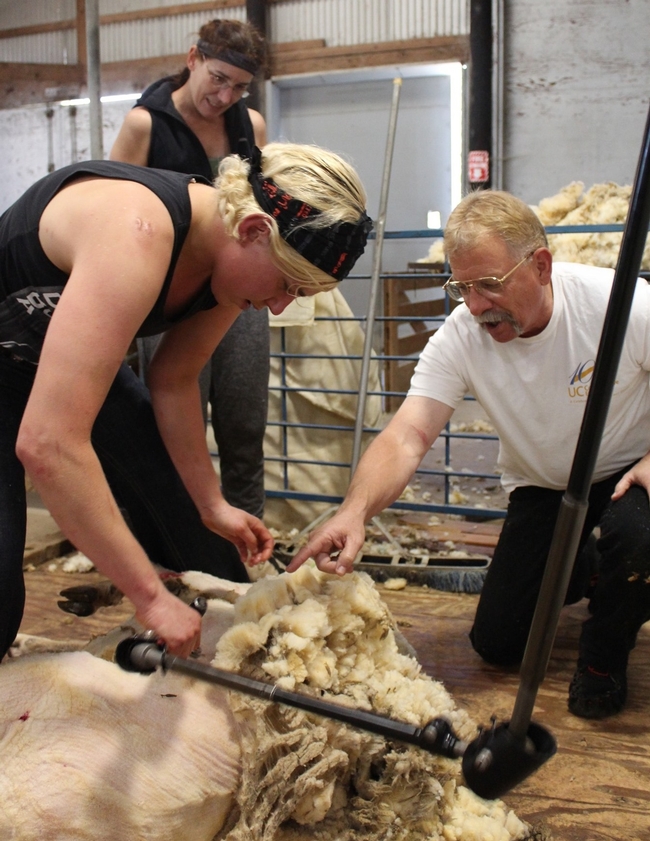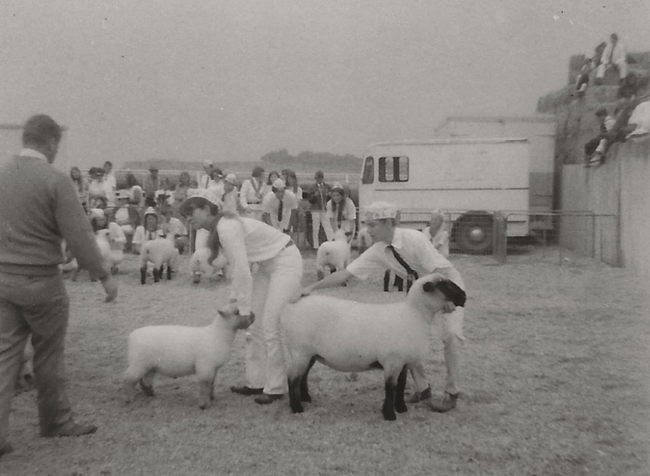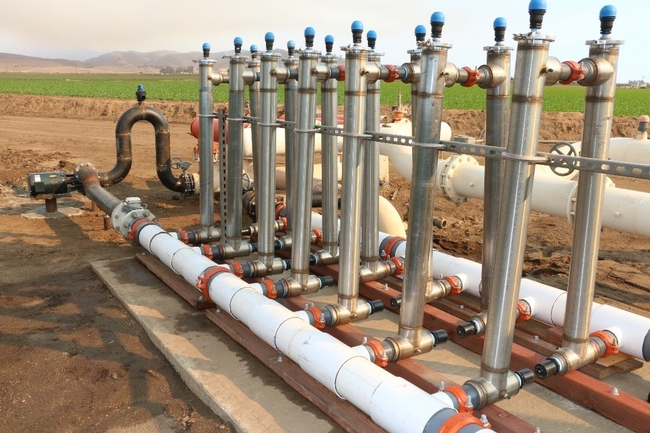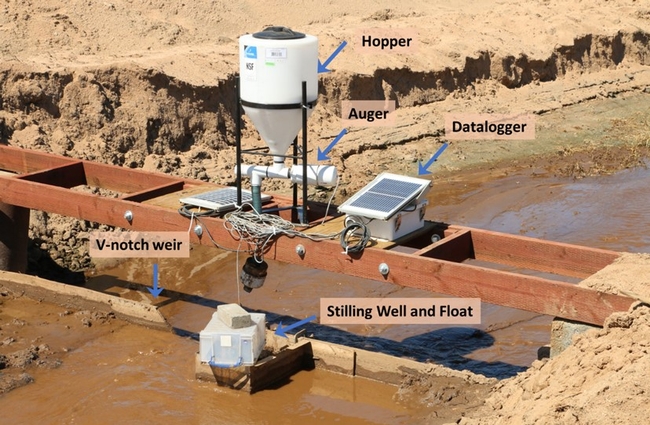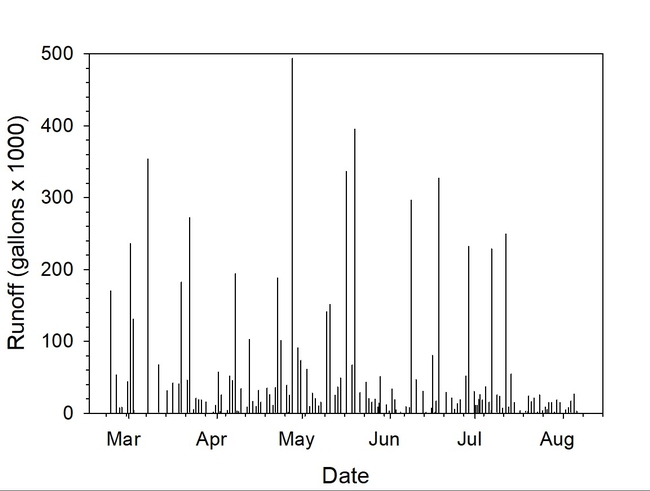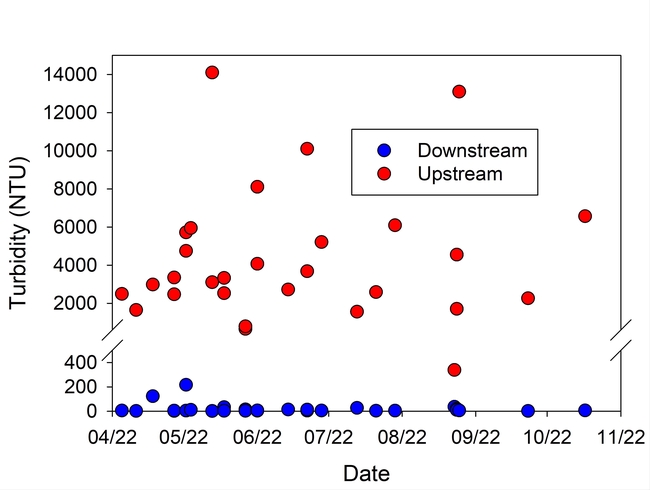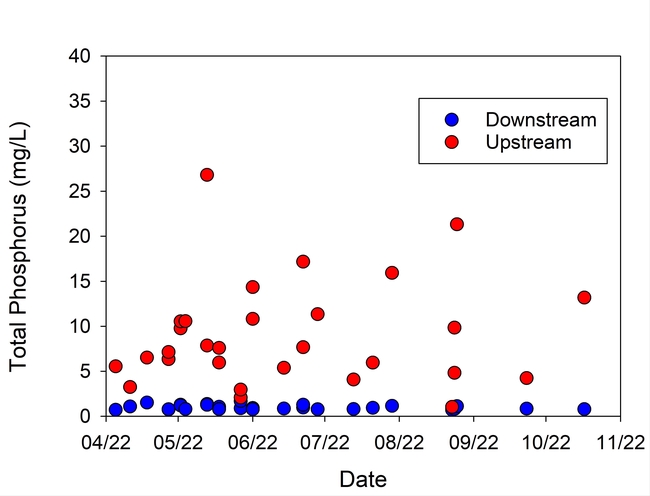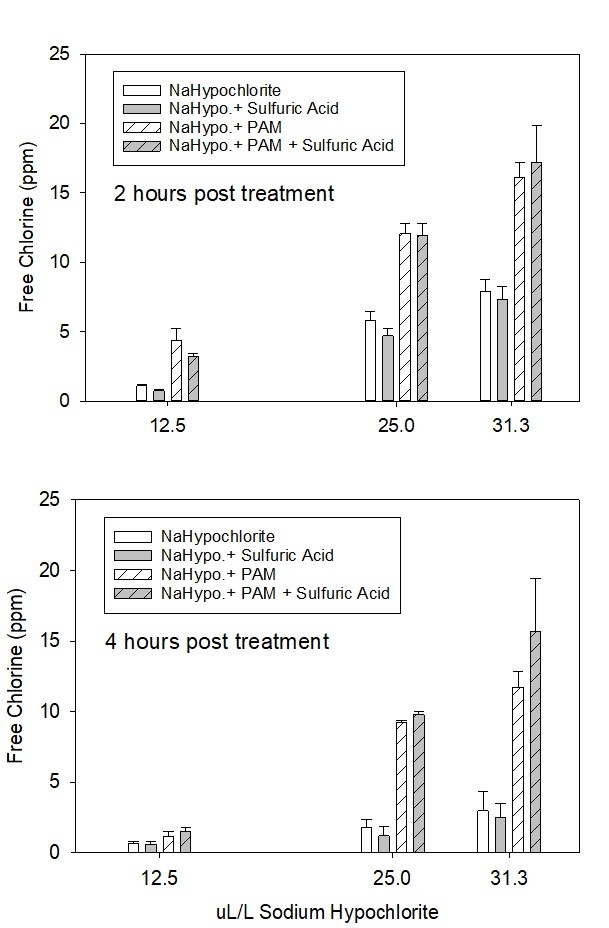Posts Tagged: water quality
Lawn-pocalypse! Surviving Drought
Ah, summer! The season of sunburns, pool parties, and… lawn droughts. If your once lush, green carpet now looks like a crunchy brown doormat, you're not alone. Let's dive into why your yard is staging a dramatic death scene and what you can do to...

Bermuda grass and weeds overtaking drought stressed turf grass.
Shearing students, ranchers flock to livestock advisor Harper
UCCE livestock advisor John Harper retires after 32 years
"If you know how to shear, you'll never be poor," Stephany Wilkes remembers John Harper, University of California Cooperative Extension livestock and natural resources advisor for Mendocino and Lake counties, telling her sheep shearing class in 2013.
“He was speaking to everyone, of course, but he really spoke to me: being poor (again) is one of my greatest fears and I've avoided it at all costs,” Wilkes said. Harper's words and a certificate from the course gave her the confidence to leave Silicon Valley for greener pastures.
“Eleven years later, with a successful business and published book about shearing to boot, I can confirm John does not lie to his students,” says the former software developer. “More than that, he is encouraging, calm, respectful, experienced, honest, funny and an excellent storyteller. If not for John, I would not have the life I live today.”
Today, Wilkes is a sheep shearer, knitter and author of “Raw Material: Working Wool In the West.”
Harper officially retired July 1, 2023, after 32 years in his UC Cooperative Extension advisor role, but returned to serve as interim director of UCCE for Mendocino and Lake counties until Matthew Barnes was hired on May 1.
For years, UCCE has offered the only five-day sheep shearing school in California, training 15 to 28 students annually, and Harper has been the force behind it.
“Most of the shearers now in the shearing business in California were trained by me and my fellow instructors,” said Harper, the state's Ed Sheeran of sheep shearing.
He first offered the sheep shearing school in 1993 at the Paul and Kathy Lewis ranch in Upper Lake, with subsequent schools at the Stanley Johnson ranch in Booneville. In the early days, Harper brought in instructors from New Zealand, before he and Mike McWilliams, a former member of the USA Sheep Shearing Team, began teaching. Later Harper moved the school to UC Hopland Research and Extension Center, where he has hosted the school for the past 27 years.
With grant funds from the National Sheep Industry Improvement Association, Harper bought shearing equipment and made seven portable shearing pens to offer shearing school at a private ranch in Clear Lake Oaks this year.
“This program is nationally and internationally known and there is a waiting list of over 1,000 people who want to take it,” Harper said.
Harper's baa-ackground in 4-H
Growing up on his family's farm in Yucaipa, just east of San Bernardino, Harper's electrical engineer father gave him a choice between caring for the horses' hooves and shearing sheep. “I chose shearing since I wasn't very big and didn't like horses leaning on me,” he said.
From age 9 to 19, he was active in the California 4-H Youth Development Program, achieving the Gold Star rank. “I was in 4-H with sheep, horses, veterinary medicine, tractor, electrical, welding and woodworking projects,” said Harper, who won the outstanding junior leader award. “I was a junior leader in sheep and won the state award for my sheep project. I showed registered Hampshire sheep, and my flock grew to 50 ewes before I was done.”
“Shearing sheep helped me pay for college,” said Harper, who earned a master's degree in range management at the University of Arizona and a bachelor's degree in animal science and agricultural economics at UC Davis.
After college, Harper worked as an assistant manager on the PolyPay breed development at Nicolas Sheep Farms in Sonoma before starting a career in Cooperative Extension in Arizona.
When Harper joined UC Agriculture and Natural Resources in 1991, the internet was in its infancy, but he recognized its potential for sharing information. He learned how to write code and created the university's first websites for livestock and natural resources. He also was an early adopter of blogging, Facebook, LinkedIn and Twitter to extend information, which earned him a silver award in 2011 from the Association of Natural Resources Extension Professionals.
Beyond shearing, Harper pioneered cutting-edge research
Although sheep are more photogenic on social media, Harper has been flooded with awards and accolades for his water quality research.
Informed by research from Harper, Lake County rancher Russ Rustici created the first rangeland water-quality ranch plan in the state. Rustici was so pleased that he donated research funding for the entire UC Rangeland Watershed Program team and later established two endowed chairs at UC Davis and one at UC Berkeley. The Rustici Endowment now provides research and education grants for rangeland and cattle efforts.
In 1995, Harper and his UCCE colleagues began teaching the Rangeland Water Quality Planning Short Course to help land managers develop water-quality management plans for their ranches to prevent water pollution. By 2015, they had taught more than 80 of these short courses, reaching more than 1,000 ranchers in 35 counties, representing over 2 million acres statewide. In one follow-up survey, 68% of the participants said they had implemented practices on their ranches to protect or improve water quality.
In 2012, the Western Extension Directors Association presented Harper with its Award of Excellence for the Rangeland Watershed Program.
Eating between the vines
For one livestock research project, he and UCCE colleagues trained sheep to graze the grass in vineyards and not eat the grapevines. “The results went viral internationally and really brought targeted grazing to the forefront,” Harper said. “It also raised sheep number by 2% in our two counties.”
In addition to advising ranchers and teaching sheep shearing, Harper has served in several leadership positions, rotating in every few years as UCCE director in Mendocino and Lake counties. From 2014 to 2017, he led UC ANR's Sustainable Natural Ecosystems Strategic Initiative, advocating for the hiring of experts in climate change, economics, small ruminants, forestry and fire.
“I'm especially proud that we were able to recruit a small ruminant extension veterinary specialist – a position that was unfilled for over seven years, despite California being the second-largest sheep-producing state in the nation,” Harper said.
The certified rangeland manager and rangeland professional has long been a member of the Society for Range Management and the American Society for Animal Science. In 2008, he served as president of the California-Pacific Section of the Society for Range Management. Currently he is the secretary/treasurer for the Mendocino/Lake Wool Growers Association and is ad hoc director of the Mendocino/Lake County Cattlemen's Association.
In 2015, the Society for Range Management gave him the Outstanding Achievement Award-Stewardship. In 2017, the California Wool Growers Association bestowed on him its Golden Fleece Award for Lifetime Achievement. In 2019, Harper was named Range Manager of the Year by the California-Pacific Section of the Society for Range Management for his contributions to the profession. In 2022, the 12th District Agricultural Association Redwood Empire Fair honored him with their Mendocino County Agriculturalist of the Year Award.
Harper also received UC Agriculture and Natural Resources' prestigious emeritus status. In retirement, he plans to play his banjo and continue offering the sheep shearing school with GaryVorderbuggen, who has been teaching with him for 18 years. Randy Helms, a former member of the USA Sheep Shearing Team, and Harper's former students Matt Gilbert, Lora Kinkade and Wilkes are among those who have re-ewe-nited with him as sheep shearing instructors.
“John taught the UCCE sheep shearing schools I attended in 2013-2015, and I was deeply honored to teach beside him in 2023 and 2024. It is one of the highlights of my life,” said Wilkes, now better known for working with wool than developing software.
“Like so many past students, I am forever in his debt,” she added. “We've got to keep this shearing school you started going, John. It is a gift. Thank you.”
New approaches to using polyacrylamide (PAM) to reduce sediment and sediment bound pesticides and nutrients in runoff and improve chlorine efficacy: Part II—an auger applicator for treating irrigation runoff in farm ditches
Minimizing suspended sediments in irrigation runoff is desirable for several reasons. For growers reusing tailwater for watering their crops, they must assure that the water has minimal food safety risks by testing it for generic E coli and/or treating it with chlorine. The concentration of free (or reactive) chlorine is reduced when tailwater contains a high concentration of suspended sediments. Treating a large volume of tailwater with chlorine can be a significant expense over a season so it is important to be able to remove as much of the suspended sediments as possible before treatment.
A second reason is that water quality regulations under Agriculture discharge Order 4.0 requires tailwater discharged into public water ways to not be toxic to aquatic organisms. Pesticides that strongly bind to soil, such as pyrethroids, are carried on the suspended sediments in runoff which can cause toxicity to aquatic organisms that live in creeks and rivers downstream from farms. Also, particulate forms of N and P which bind with the suspended sediments pose a water quality risk to receiving waterbodies such as the sloughs and wetlands along the coast. Both nutrients can spur algal blooms which reduces dissolved oxygen available to fish and other aquatic organisms.
In a previous article we discussed a new approach to using Polyacrylamide (PAM), an inexpensive polymer molecule for reducing soil erosion, to treat sprinkler water. This practice uses a specialized applicator (Fig. 1) to condition water flowing from a well with PAM. An advantage of this method is that the cartridges in the applicator release a small amount of PAM (1 to 2 ppm) into the irrigation water, which flocculates soil particles that could potentially become suspended and transported in runoff. Field tests using a prototype version of this applicator resulted in about 90% less suspended sediment in the tailwater when treated with PAM compared to untreated irrigation water.
Auger ditch applicator
A second approach we developed for reducing suspended sediment in runoff is to use a smart applicator that can automatically apply dry PAM to the runoff water flowing in farm ditches. This type of applicator is suspended on a platform above a ditch and uses a hopper filled with dry PAM and an auger system controlled by an electric motor and small computer to drop PAM down a tube into the flowing runoff (Fig. 2). A weir and float mechanism located upstream are used to monitor the flow rate of the runoff so that the computer can adjust the frequency that PAM is applied. A video at this link demonstrates how the auger applicator operates.
Field testing of the ditch applicator
A yearlong study at a commercial farm showed that the ditch applicator was effective in removing 98% of the suspended sediments transported in runoff (Table 1, Fig. 3). Based on the total runoff measured in a single drainage ditch during the 2022 season (21.5 acre-feet), an estimated 106 tons of sediment were removed (Fig. 4).
Turbidity in the runoff was reduced by more than 99%, and Total P and N were reduced on average by 89% and 60%, respectively, during the season (Table 1, Figs. 5 and 6). These reductions in nutrient load, suspended sediment, and turbidity could greatly improve water quality in water bodies downstream from farms that discharge irrigation runoff.
Table 1. Average concentration of N, P, and sediments carried in irrigation runoff before (upstream) and after (downstream) treatment with the PAM ditch applicator (April – October 2022). Average of 32 paired grab samples from 3 farm ditches. Downstream locations varied from 300 to 500 ft downstream from the PAM applicators.
Ditch applicator vs well applicator
Although more effective at reducing suspended sediment in runoff than the well applicator, the ditch applicator required more maintenance. PAM needed to be added to the hopper once or twice per week during the irrigation season, and sediment that settled in the ditches had to be cleaned out periodically using a backhoe. Also, removed sediment had to be spread back in the fields. The well applicator only required periodic refilling of the cartridges with PAM, and minimizes the amount of sediment that settles out in the drainage ditches.
PAM effects on chlorine requirement
To evaluate the effect of PAM on the quantity of chlorine needed to treat runoff, we performed a laboratory assay on samples of sprinkler runoff collected upstream and downstream of one of the ditch applicators. The turbidity of the upstream (untreated) and downstream samples (PAM treated) was 2276 and 9.5 NTU, respectively. The electrical conductivity of the runoff samples was 1.35 dS/m and the pH was 8.4 before adding chlorine. The main factors evaluated in the assay were sodium hypochlorite concentration and acidification with 10% sulfuric acid. Presumably, acidifying the runoff to a pH of 6.5 should increase the concentration of the more reactive form of chlorine, hypochlorous acid which is more effective as a microbial disinfectant. Residual free chlorine concentration of the treatments was evaluated 2 and 4 hours after adding 12.5% sodium hypochlorite at concentrations ranging 12.5 to 31.3 ul per liter of runoff (100 to 250 ul of 12.5% NaOCl per L of water).
The laboratory assay showed that reducing suspended sediment concentration using PAM increased the efficacy of chlorine treatment of runoff. The free chlorine concentration for PAM treated runoff was more than twice the concentration measured in the untreated runoff for all sodium hypochlorite concentrations evaluated after 2 hours and more than three times the concentration after 4 hours (Fig. 7). Free chlorine concentration in the PAM treated runoff was more than 2.5 ppm two hours after treatment at the lowest concentration of chlorine evaluated (12.5 ul/L) but was less than 0.5 ppm in the untreated runoff. To attain similar chlorine efficacy as PAM treated runoff, untreated runoff would require twice as much sodium hypochlorite (25 ul/L). These chlorine requirements would correspond to 26 and52 gallons of 12.5% sodium hypochlorite to treat and acre-foot of runoff with and without a PAM pretreatment, respectively.
Acidification of the runoff to a pH of 6.5 with sulfuric acid increased the free chlorine concentration in the PAM treated runoff at the highest concentration of sodium hypochlorite (31.3 ul/L) after 4 hours. Acidification did not have a significant effect on free chlorine concentration for the other treatments.
Summary
Both versions of the dry PAM applicators (well and ditch) show promise for greatly reducing soil erosion, as well as helping improve water quality and the efficacy of chlorine for treating tail water reused for irrigation. By considerably reducing the concentration of suspended sediment in irrigation runoff, chlorine can be more effective as a disinfection agent, and better control E. coli and other microbial pathogens that could potentially cause public health risks.
Acknowledgments: We greatly appreciate assistance in fabricating the prototype PAM applicators from RayFab. This project was funded by the California Leafy Green Research Board.
Further reading
Graywater
Q: Can I use the graywater from my washing machine to water my vegetable garden and fruit trees?
A: There are two key considerations, discussed below, relating to the use of graywater in the garden: what is meant by the term graywater and on what plants to use it.
Graywater Definition
Graywater is untreated, non-disinfected household wastewater that does not include toilet waste. It may be sourced from showers, baths, and washing machines. Untreated water from sources such as kitchen sinks and dishwashers, which may have properties that encourage pathogens, is called dark graywater. Water from toilets and washing machines used to launder diapers or chemically contaminated clothing is called black water. Only graywater should be used in the landscape.
Graywater Usage
Graywater can be safely used to water landscape plants and orchard trees. Because graywater can contain bacteria and viruses that cause illness, it should not be used to grow vegetables if the edible portion may come in contact with the soil. For example, graywater should not be used for growing asparagus, beets, carrots, cucumbers, lettuces and other salad greens, garlic, onions, potatoes, melons, squash, bush beans, radishes, turnips, unstaked tomatoes, or strawberries. Crops not touching the ground like staked tomatoes, peppers, and eggplants should be OK.
https://ccmg.ucanr.edu/files/289340.pdf
Laundry Detergent Considerations
When using laundry rinse water to irrigate plants, your choice of household products will affect the composition of the graywater. The wrong products can adversely affect plants and soils. It is best to avoid using products that contain sodium or sodium compounds, bleach, or boron, as these can result in an alkaline soil condition that suppresses healthy soil biologic activity and is poorly tolerated by many plants.
Although the UC Master Gardener Program of Contra Costa County cannot recommend any products, the FAQ page on Greywater Action's website (https://greywateraction.org/greywater-faq/) lists some products that are plant friendly. These are generally biodegradable, non-toxic, and salt and boron free. The Ecology Center in Berkeley has also evaluated several cleaning products for compatibility with graywater systems. Consult their website at https://ecologycenter.org/factsheets/ for a current list of products. (Click on the link to Greywater-Compatible Cleaning Products.)
Other Considerations
Some key takeaways excerpted from our Marin Master Gardener colleagues are listed below. https://marinmg.ucanr.edu/BASICS/CONSERVE_WATER_-_ENERGY/Graywater/
Do:
Water ornamentals with graywater which is often rich in nutrients.
Check your plants first—Acid-loving plants won't tolerate salts found in high pH graywater and evergreen trees are often more salt-sensitive than deciduous trees.
Alternate graywater irrigation with fresh water to minimize salt build up.
Watch what you put in the wash. Use biodegradable pH balanced, sodium-free, boron-free, chlorine-free products in the washing machine and for bathing.
Apply graywater directly to the ground—don't allow it to be sprayed on plant surfaces.
Use graywater within 24 hours after collecting to minimize bacterial growth.
Don't:
Don't let graywater come in contact with skin.
Don't use on root vegetables such as carrots and onions.
Don't use on lawns unless the graywater is delivered below the surface. If sprayed on the surface, people or pets may come in contact with it.
I hope this helps. Please don't hesitate to contact us with any further questions. Good luck with your tomatoes and fruit trees!
Help Desk of the UC Master Gardeners of Contra Costa County (GD)

Credit: Pasadena Water and Power
Climate-Change Resources
University of California UC ANR Green Blog (Climate Change and Other Topics) https://ucanr.edu/blogs/Green/index.cfm?tagname=climate%20change (full index)
Examples:
- Save Trees First: Tips to Keep Them Alive Under Drought https://ucanr.edu/b/~CdD
- Landscaping with Fire Exposure in Mind: https://ucanr.edu/b/~G4D
- Cities in California Inland Areas Must Make Street Tree Changes to adapt to Future Climate https://ucanr.edu/b/~oF7
Drought, Climate Change and California Water Management Ted Grantham, UC Cooperative Extension specialist (23 minutes) https://youtu.be/dlimj75Wn9Q
Climate Variability and Change: Trends and Impacts on CA Agriculture Tapan Pathak, UC Cooperative Extension specialist (24 minutes) https://youtu.be/bIHI0yqqQJc
California Institute for Water Resources (links to blogs, talks, podcasts, water experts, etc.) https://ciwr.ucanr.edu/California_Drought_Expertise/
UC ANR Wildfire Resources (publications, videos, etc.) https://ucanr.edu/News/For_the_media/Press_kits/Wildfire/ (main website)
-UC ANR Fire Resources and Information https://ucanr.edu/sites/fire/ (main website)
-Preparing Home Landscaping https://ucanr.edu/sites/fire/Prepare/Landscaping/
UC ANR Free Publications https://anrcatalog.ucanr.edu/ (main website)
- Benefits of Plants to Humans and Urban Ecosystems: https://anrcatalog.ucanr.edu/pdf/8726.pdf
-Keeping Plants Alive Under Drought and Water Restrictions (English version) https://anrcatalog.ucanr.edu/pdf/8553.pdf
(Spanish version) https://anrcatalog.ucanr.edu/pdf/8628.pdf
- Use of Graywater in Urban Landscapes https://anrcatalog.ucanr.edu/pdf/8536.pdf
- Sustainable Landscaping in California https://anrcatalog.ucanr.edu/pdf/8504.pdf
Other (Non-UC) Climate Change Resources
Urban Forests and Climate Change. Urban forests play an important role in climate change mitigation and adaptation. Active stewardship of a community's forestry assets can strengthen local resilience to climate change while creating more sustainable and desirable places to live. https://www.fs.usda.gov/ccrc/topics/urban-forests
Examining the Viability of Planting Trees to Mitigate Climate Change (plausible at the forest level) https://climate.nasa.gov/news/2927/examining-the-viability-of-planting-trees-to-help-mitigate-climate-change/
Reports and other information resources coordinated under the auspices of the United Nations and produced through the collaboration of thousands of international scientists to provide a clear and up to date view of the current state of scientific knowledge relevant to climate change. United Nations Climate Action
Scientific reports, programs, action movements and events related to climate change. National Center for Atmospheric Research (National Science Foundation)
Find useful reports, program information and other documents resulting from federally funded research and development into the behavior of the atmosphere and related physical, biological and social systems. Search and find climate data from prehistory through to an hour ago in the world's largest climate data archive. (Formerly the "Climatic Data Center") National Centers for Environmental Information (NOAA)
Think tank providing information, analysis, policy and solution development for addressing climate change and energy issues (formerly known as the: "Pew Center on Global Climate Change"). Center for Climate & Energy Solutions (C2ES)
Mapping Resilience: A Blueprint for Thriving in the Face of Climate Disaster. The Climate Adaptation Knowledge Exchange (CAKE) was launched in July 2010 and is managed by EcoAdapt, a non-profit with a singular mission: to create a robust future in the face of climate change by bringing together diverse players to reshape planning and management in response to rapid climate change. https://www.cakex.org/documents/mapping-resilience-blueprint-thriving-face-climate-disaster
Cal-Adapt provides a way to explore peer-reviewed data that portrays how climate change might affect California at the state and local level. We make this data available through downloads, visualizations, and the Cal-Adapt API for your research, outreach, and adaptation planning needs. Cal-Adapt is a collaboration between state agency funding programs, university and private sector researchers https://cal-adapt.org/
Find reports, maps, data and other resources produced through a confederation of the research arms of 13 Federal departments and agencies that carry out research and develop and maintain capabilities that support the Nation's response to global change. Global Change (U.S. Global Change Research Program)
The Pacific Institute is a global water think tank that combines science-based thought leadership with active outreach to influence local, national, and international efforts to develop sustainable water policies. https://pacinst.org/our-approach/
Making equity real in climate adaptation and community resilience policies and programs: a guidebook. https://greenlining.org/publications/2019/making-equity-real-in-climate-adaption-and-community-resilience-policies-and-programs-a-guidebook/
Quarterly CA Climate Updates and CA Drought Monitor Maps (updated each Thursday) https://www.drought.gov/documents/quarterly-climate-impacts-and-outlook-western-region-june-2022

